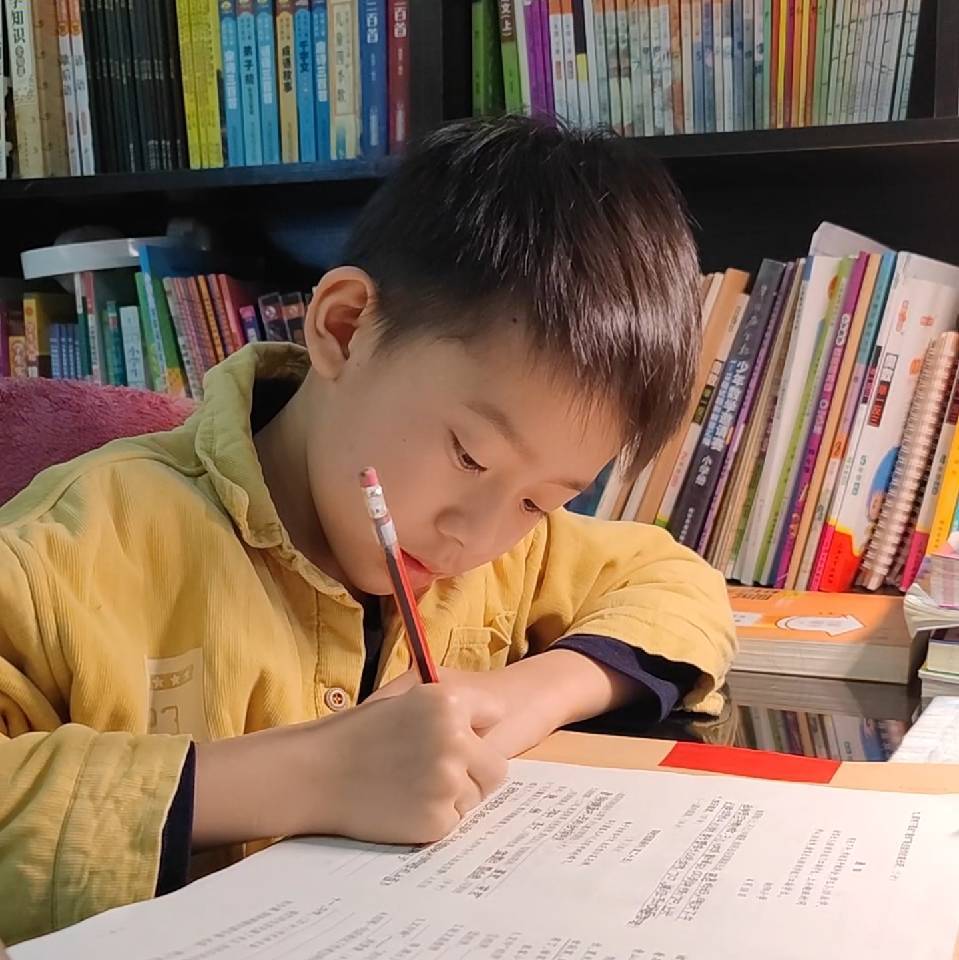直接引语 和 间接引语
直接引语和间接引语是英语中传递他人话语的两种方式,核心区别在于是否保留原句的语言形式:直接引语原样引用他人话语,间接引语则将他人话语转化为自己的表述,需调整时态、人称、指示代词等细节以符合语境逻辑。
一、直接引语(Direct Speech)
直接引语是一字不差地引用他人的原话,需用引号(" ") 标注,且通常搭配引导词“say”“ask”“tell”等(“tell”后需接宾语,如“tell me”)。
核心特点:
1. 保留原句的时态、人称、指示代词、时间/地点状语(如原句用“I”,直接引语仍用“I”;原句用“today”,直接引语仍用“today”);
2. 引号内的句子需符合原句的语法结构,句末标点(句号、问号、感叹号)需放在引号内;
3. 引导词(如said, asked)后可接逗号,连接引号内的句子。
直接引语例句:
1. My mother said, “I will cook your favorite dish for dinner tonight.”(我妈妈说:“今晚我会给你做你最爱吃的菜。” 引号内保留原句的将来时“will cook”、第一人称“I”和时间状语“tonight”)
2. The teacher asked, “Did you finish your homework yesterday?”(老师问:“你们昨天完成作业了吗?” 引号内保留原句的一般过去时疑问句结构,问号在引号内)
3. Tom told his friend, “I have visited this museum three times.”(汤姆对他的朋友说:“我已经参观过这家博物馆三次了。” “told”后接宾语“his friend”,引号内用现在完成时“have visited”)
4. She shouted, “Be careful! There’s a car coming!”(她大喊:“小心!有车过来了!” 引号内保留感叹句结构,感叹号在引号内)
5. The old man said, “I lived in this village when I was young.”(老人说:“我年轻时住在这个村子里。” 引号内保留一般过去时“lived”和时间状语“when I was young”)
6. My classmate asked me, “Can you lend me your English notebook?”(我的同学问我:“你能借我你的英语笔记本吗?” “asked”后接宾语“me”,引号内用情态动词“can”的疑问句)
7. The reporter said, “The meeting will start at 9 o’clock tomorrow morning.”(记者说:“会议将于明天上午9点开始。” 引号内保留将来时“will start”和时间状语“tomorrow morning”)
8. He whispered to his sister, “I don’t want to go to the party.”(他对妹妹小声说:“我不想去那个派对。” 引号内保留否定句结构“don’t want”)
9. The tour guide said, “This ancient building was built 500 years ago.”(导游说:“这座古建筑是500年前建造的。” 引号内保留一般过去时的被动语态“was built”)
10. My little brother asked, “Why is the sky blue?”(我弟弟问:“天空为什么是蓝色的?” 引号内保留特殊疑问句结构,疑问词“why”在引号内)
二、间接引语(Indirect Speech/Reported Speech)
间接引语是用自己的话转述他人的内容,无需引号,需根据“转述时的语境”调整原句的时态、人称、指示代词、时间/地点状语,使逻辑连贯。间接引语通常由“that”“if/whether”(表疑问)或疑问词(what, why等)引导(“that”常可省略)。
间接引语的核心调整规则(关键!)
1. 时态调整:若主句是“过去时”(如said, asked, told),间接引语需将原句时态“倒推一级”(客观真理、永恒事实除外,仍用一般现在时);若主句是“现在时”(如says, asks),间接引语时态不变。
时态倒推表:
一般现在时 → 一般过去时(do → did)
现在进行时 → 过去进行时(am/is/are doing → was/were doing)
现在完成时 → 过去完成时(have/has done → had done)
一般过去时 → 过去完成时(did → had done)
一般将来时 → 过去将来时(will do → would do;be going to → was/were going to)
2. 人称调整:根据“转述者、原说话人、听话人”的关系,将原句的人称代词(I, you, we等)改为符合语境的代词(如原句“I”,若原说话人是“他”,转述时改为“he”)。
3. 指示代词/时间/地点状语调整:
指示代词:this → that;these → those
时间状语:now → then;today → that day;tomorrow → the next day;yesterday → the day before
地点状语:here → there
动词:come → go
间接引语例句(对应直接引语逻辑,便于对比)
1. My mother said (that) she would cook my favorite dish for dinner that night.(我妈妈说她那晚要给我做我最爱吃的菜。主句“said”是过去时,原句“will cook”→“would cook”,“I”→“she”,“tonight”→“that night”,“that”省略)
2. The teacher asked if/whether we had finished our homework the day before.(老师问我们前一天是否完成了作业。原句是一般过去时疑问句,主句“asked”是过去时,“did finish”→“had finished”,“you”→“we”,“yesterday”→“the day before”,用“if/whether”引导疑问)
3. Tom told his friend (that) he had visited that museum three times.(汤姆对他的朋友说他已经参观过那家博物馆三次了。主句“told”是过去时,原句“have visited”→“had visited”,“I”→“he”,“this”→“that”)
4. She shouted to warn us that we should be careful because there was a car coming.(她大喊提醒我们要小心,因为有车过来了。原句感叹句转化为陈述句,“is coming”→“was coming”,补充“to warn us”使语义更完整)
5. The old man said (that) he had lived in that village when he was young.(老人说他年轻时住在那个村子里。原句“lived”是一般过去时,主句“said”是过去时,但“when he was young”是明确的过去时间,无需倒推为过去完成时,“this”→“that”)
6. My classmate asked me if/whether I could lend him my English notebook.(我的同学问我是否能借他我的英语笔记本。原句“can”→“could”,“you”→“I”,“me”→“him”,用“if/whether”引导疑问)
7. The reporter said (that) the meeting would start at 9 o’clock the next morning.(记者说会议将于第二天上午9点开始。原句“will start”→“would start”,“tomorrow morning”→“the next morning”)
8. He whispered to his sister (that) he didn’t want to go to that party.(他对妹妹小声说他不想去那个派对。原句“don’t want”→“didn’t want”,“I”→“he”,“the”→“that”,此处“the”无需调整,用“that”更明确)
9. The tour guide said (that) that ancient building had been built 500 years ago.(导游说那座古建筑是500年前建造的。原句“was built”→“had been built”,“this”→“that”,被动语态随时态倒推)
10. My little brother asked why the sky is blue.(我弟弟问天空为什么是蓝色的。“天空是蓝色的”是客观真理,即使主句“asked”是过去时,间接引语仍用一般现在时“is”,无需倒推)
英语基础
- 陈一男基础英语研究
- 2023年广东中考英语试题
- 2024年广东中考英语试题
- 2025年广东中考英语试题(待续)
- 学习英语最有效的方法与学习路径
- 词法:名代形副动,数介连叹助
- 词法:名词
- 词法:代词
- 词法:冠词:a、an、the、零冠词
- 词法:形容词
- 词法:副词
- 词法:数词:基数、序数
- 词法:量词
- 词法:感叹词:What! Yes!
- 词法:连词: F、A、N、B、O、Y、S
- 词法:介词:位、时、方、手段、原因、目的
- 词法:易混淆介词:时间、地点、方式、关系
- 词法:动词
- 句法:非谓语动词:不定式、动名词、分词
- 短语:名短、动短、形短、副短、介短
- 构词法:英语中创造新单词的规则和方法
- 前缀 + 词根:仅改词义,不改词性
- 词根 + 后缀:改变词性,可微调词义
- 合成法:A+B
- 转化法:单词不改变形式,直接变词性
- 缩略法:缩短原词构成新词
- 构词法:名词后缀
- 单词记忆:语言学习的基础
- [1]一般现在时 do/does
- [2]一般过去时 did
- [3]一般将来时 will + 动原
- [4]一般过去将来时 would + 动原
- [1]现在进行时 be(am/is/are) + 现分
- [2]过去进行时 was/were + 现分
- [3]将来进行时 will be + 现分
- [4]过去将来进行时 would be + 现分
- [1]现在完成时 have/has + 过分
- [2]过去完成时 had + 过分
- [3]将来完成时 will have + 过分
- [4]过去将来完成时 would have + 过分
- [1]现在完成进行时 have/has been+现分
- [2]过去完成进行时 had been+现分
- [3]将来完成进行时 will have been+现分
- [4]过去将来完成进行时 would have been+现分
- 语态:主动语态、被动语态
- 句子结构:核心是“主谓关系”
- 句法:存在句 There be 句型
- 句法:拥有句 have/has 句型
- [1]主语:句子所叙述的主体
- [2]谓语:陈述主语的动作、状态或特征
- [3]宾语:动作的目标 或 关联的对象
- [4]定语:回答关于中心词的疑问
- [5]状语:回答关于句子成分的疑问
- [6]补语:对主语或宾语进行补充定性
- [7]表语:必须搭配系动词
- [8]同位语:给本位语贴标签、做注释
- 主谓一致:主语和谓语在人称和数保持一致
- 句子的分类:按结构分类、按功能分类
- 直接引语 和 间接引语
- [1]句法:名词性从句:主语从句
- [2]句法:名词性从句:宾语从句
- [3]句法:名词性从句:表语从句
- [4]句法:名词性从句:同位语从句
- 句法:定语从句:7W + 1T
- [1]时间状语从句:when、while、as
- [2]地点状语从句:where、wherever
- [3]原因状语从句:because、since、as
- [4]条件状语从句:if、unless、as long as
- [5]目的状语从句:so that、in order that
- [6]结果状语从句:so...that、such...that
- [7]让步状语从句:although/though、while
- [8]方式状语从句:as、as if/as though
- [9]比较状语从句:as...as
- 强调句、倒装句、省略句、虚拟语气句
- 虚拟语气:表达非真实情况的语法结构
- 积累:意思相近的单词
- 积累:be
- 积累:do
- 积累:to
- 积累:no
- 积累:not
- 积累:none
- 积累:nothing
- 积累:good
- 积累:well
- 积累:also
- 积累:get
- 积累:have
- 积累:if
- 积累:whether
- 积累:but
- 积累:or
- 积累:of
- 积累:talk
- 积累:take
- 积累:with
- 积累:by
- 积累:for
- 积累:the
- 积累:than
- 积累:then
- 积累:that
- 积累:this
- 积累:as
- 积累:so
- 积累:such
- 积累:which
- 积累:while
- 积累:where
- 积累:when
- 积累:what
- 积累:how
- 积累:who
- 积累:whom
- 积累:whose
- 积累:many
- 积累:much
- 积累:too
- 积累:very
- 积累:some
- 积累:any
- 积累:few
- 积累:little
- 积累:each
- 积累:every
- 积累:other
- 积累:others
- 积累:another
- 积累:time
- 积累:day
- 积累:before 与 ago
- 积累:in
- 积累:on
- 积累:at
- 听力[A1-01]:Family(家庭)
- 听力[A1-02]:Food(食物)
- 听力[A1-03]:Weather(天气)
- 听力[A1-04]:Supermarket(超市)
- 听力[A1-05]:Transportation(交通工具)
- 听力[A1-06]:Restaurants(餐厅)
- 听力[A1-07]:Weekend plans(周末计划)
- 听力[A1-08]:Pets(宠物)
- 听力[A1-09]:Animals(动物)
- 听力[A1-10]:School life(校园生活)
- 听力[A1-11]:Favorite place(最喜欢的地方)
- 听力[A1-12]:Directions(指路)
- 听力[A1-13]:Music(音乐)
- 听力[A1-14]:Daily Technology Products(日常科技产品)
- 听力[A1-15]:Social Activities(社交活动)
- 听力[A1-16]:Daily Problems(日常问题)
- 听力[A1-17]:Celebrations(庆祝活动)
- 听力[A1-18]:Seasonal Fruits(应季水果)
- 听力[A1-19]:Meeting new people(结识新朋友)
- 听力[A1-20]:Friends(朋友)
- 听力[A1-21]:Stay Guide(住宿指南)
- 听力[A1-22]:Parks(公园)
